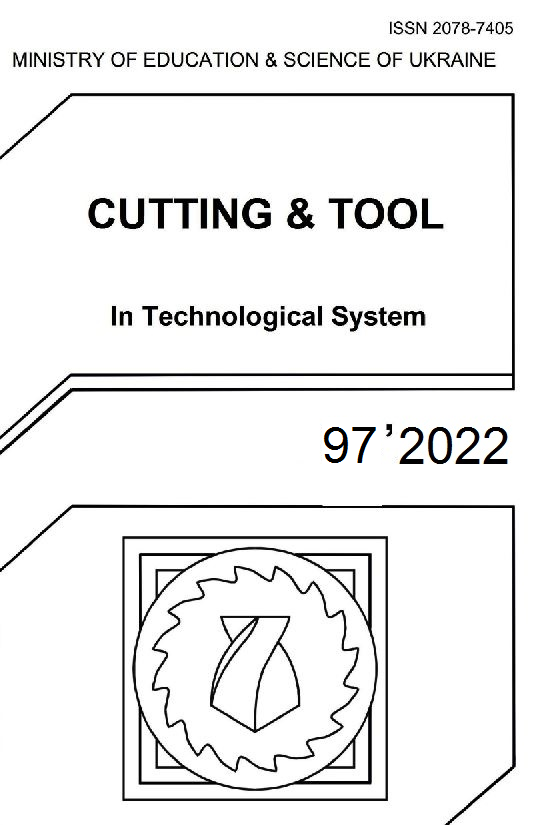INVESTIGATION ON PRODUCTION PARAMETERS OF ADDITIVELY MANUFACTURED ABS POLYMER GEARS
DOI:
https://doi.org/10.20998/2078-7405.2022.97.08Keywords:
3D printing, ABS; FDM and printing parametersAbstract
The amount of wear and the load-bearing capabilities are important factors in the lifespan performance of gears. And those factors can be influenced by different 3D printing parameters in production. The objective of the research work was to analyze the material behaviour of printed Acrylonitrile butadiene styrene (ABS) polymers for gears according to production parameters. Each printed specimen was tested several times and summarised the results by determining the average values. While the wear performance of the samples was highly influenced by the "Layer height" parameter, the load-bearing capacities of the printed samples were highly influenced by the amount of the "Infill pattern" production parameter. Finally, based on the carried out experimental tests, the ideal 3D printing parameters were decided to provide the highest load-bearing capacity and the lowest friction coefficient under compressive forces for 3D printed ABS polymer gears.
References
M. S. A. Mote, A. v Gaur, and M. A. B. Gujale, “Design and FEM Analysis of Helical Gear,” Journal Impact Factor, vol. 2, p. 14, 2018.
A. Bravo, D. Koffi, L. Toubal, and F. Erchiqui, “Life and damage mode modeling applied to plastic gears,” Eng Fail Anal, vol. 58, pp. 113–133, 2015.
B. Polanec, F. Zupanič, T. Bončina, F. Tašner, and S. Glodež, “Experimental investigation of the wear behaviour of coated polymer gears,” Polymers (Basel), vol. 13, no. 20, Oct. 2021, doi: 10.3390/polym13203588.
B. Trobentar, M. Hriberšek, S. Kulovec, S. Glodež, and A. Belšak, “Noise Evaluation of S-Polymer Gears,” Polymers (Basel), vol. 14, no. 3, Feb. 2022, doi: 10.3390/polym14030438.
B. Trobentar, S. Kulovec, G. Hlebanja, and S. Glodež, “Experimental failure analysis of S-polymer gears,” Eng Fail Anal, vol. 111, p. 104496, 2020.
J. R. Davis, Gear materials, properties, and manufacture. ASM International, 2005.
K. Gupta, N. K. Jain, and R. F. Laubscher, “Advanced gear manufacturing and finishing: classical and modern processes,” 2017.
P. Varalakshmi, G. R. Kumar, D. S. Harshitha, C. Akhila, and B. Priyatham, “Modeling and Manufacturing of Helical Gear by using 3D Printing Technology”.
Z. Mehdiyev, C. Felhő, and K. P. Zoltán, “Investigation on 3D Printing Parameters of PLA Polymers for Gear Applications,” in Vehicle and Automotive Engineering 4, 2023, pp. 654–664.
V. Roda-Casanova and F. Sanchez-Marin, “A 2D finite element based approach to predict the temperature field in polymer spur gear transmissions,” Mech Mach Theory, vol. 133, pp. 195–210, 2019.
L. J. Kumar, P. M. Pandey, and D. I. Wimpenny, 3D printing and additive manufacturing technologies, vol. 311. Springer, 2019.
J. Griffey, 3-D printers for libraries. American Library Association, 2014.
C. Barnatt, 3D printing third edition. CreateSpace Independent Publishing Platform, 2016.
M. Paudyal, “A Brief Study on Three-Dimensional Printing Focusing on the Process of Fused Deposition Modeling,” 2015.
P. J. Bártolo, Stereolithography: materials, processes and applications. Springer Science & Business Media, 2011.
Ultimaker, “Ultimaker Original+Full Specifications.”; Available from: <https://ultimaker.com/3d-printers/ultimaker-original-plus> [Accessed on 14.09.2022].
A. T. Methods, “Standard Test Method for Wear Testing with a Pin-on-Disk Apparatus1,” Wear, vol. 5, pp. 1–5, 2011.
Arunachalam, R. and P.K. Krishnan, Compressive Response of Aluminum Metal Matrix Composites, in Reference Module in Materials Science and Materials Engineering. 2021, Elsevier.
A. Nazir and J.-Y. Jeng, “Buckling behavior of additively manufactured cellular columns: Experimental and simulation validation,” Mater Des, vol. 186, p. 108349, 2020.
Downloads
Published
Issue
Section
License
Copyright Notice
Authors who publish with this Collection agree to the following terms:
1. Authors retain copyright and grant the Collection right of first publication with the work simultaneously licensed under a Creative Commons Attribution License that allows others to share the work with an acknowledgement of the work's authorship and initial publication in this Collection.
2. Authors are able to enter into separate, additional contractual arrangements for the non-exclusive distribution of the Collection's published version of the work (e.g., post it to an institutional repository or publish it in a book), with an acknowledgement of its initial publication in this Collection.
3. Authors are permitted and encouraged to post their work online (e.g., in institutional repositories or on their website) prior to and during the submission process, as it can lead to productive exchanges, as well as earlier and greater citation of published work.

